共计 10316 个字符,预计需要花费 26 分钟才能阅读完成。
1、安装 DHCP TFTP
yum -y install dhcp tftp-server tftp
——————————————————————————–
2、配置 DHCP 文件
cat > /etc/dhcp/dhcpd.conf << EOF
#
option domain-name “dwhd.org”;
# 设置 DHCP 的 DNS
option domain-name-servers 172.16.0.1,114.114.114.114;
# 设置 DHCP 分配出去的 IP 超时时间 单位秒
default-lease-time 86440;
# 设置 DHCPlease-time 时间 单位秒
max-lease-time 100000;
log-facility local7;
# 设置 DHCP 的 IP 和掩码
subnet 192.168.1.0 netmask 255.255.255.0 {
# 设置 DHCP 对外分配 IP 段
range 192.168.1.50 192.168.1.70;
# 设置路由 IP
option routers 192.168.1.1;
# 下面的 4 行是根据 mac 分配指定 IP
host CentOS7 {
hardware ethernet 00:0c:29:ba:3c:76;
fixed-address 192.168.1.65;
}
# 如果是 PXE 网卡来获取到了 IP 告诉网卡下一步联系的服务器 IP 192.168.1.120
next-server 192.168.1.120;
#PXE 网卡联系了服务器之后告诉它应该去获取文件 pxelinux.0
filename “pxelinux.0”;
}
EOF
——————————————————————————–
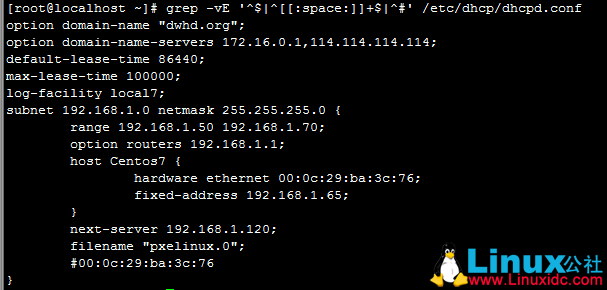
Linux 系统下构建 DHCP 服务器 http://www.linuxidc.com/Linux/2013-06/86531.htm
CentOS 下配置主从 DNS 服务器以及 DHCP 下的 DDNS http://www.linuxidc.com/Linux/2013-06/85634.htm
SUSE Linux 11 pxe+DHCP+tftp+ftp 无人值守安装 http://www.linuxidc.com/Linux/2013-06/85481.htm
Linux 下架设 DHCP 服务器过程及 3 种测试 http://www.linuxidc.com/Linux/2013-05/84832.htm
Linux 上一步一步实现 DHCP 服务器 http://www.linuxidc.com/Linux/2013-04/82244.htm
CentOS 6.5 系统下构建 DHCP 服务器 http://www.linuxidc.com/Linux/2014-06/103203.htm
Ubuntu 下 tftp 服务搭建 http://www.linuxidc.com/Linux/2012-08/67933.htm
TFTP 服务器配置 http://www.linuxidc.com/Linux/2012-07/64785.htm
Ubuntu Linux 配置 TFTP 下载服务器 http://www.linuxidc.com/Linux/2010-12/30394.htm
Ubuntu 11.10 配置 tftp Server http://www.linuxidc.com/Linux/2012-05/60808.htm
Ubuntu 12.04 搭建 TFTP 服务 http://www.linuxidc.com/Linux/2014-04/100144.htm
Ubuntu 12.04 搭建 tftp 服务器的安装、设置、调试 http://www.linuxidc.com/Linux/2014-04/100114.htm
3、检测 dhcp 配置和启动 dhcp
[root@localhost pxelinux.cfg]# service dhcpd configtest
Syntax: OK
# 检测 dhcp 配置,如果出现 Syntax: OK 则说明配置 OK 了
# 启动 DHCP 服务
service dhcpd start
——————————————————————————–
4、设置 TFTP 开机启动
chkconfig tftp on[/bash]
[bash highlight=”9,10″][root@localhost ~]# netstat -unl
Active Internet connections (only servers)
Proto Recv-Q Send-Q Local Address Foreign Address State
udp 0 0 0.0.0.0:1005 0.0.0.0:*
udp 0 0 0.0.0.0:111 0.0.0.0:*
udp 0 0 0.0.0.0:631 0.0.0.0:*
udp 0 0 0.0.0.0:776 0.0.0.0:*
udp 0 0 0.0.0.0:48819 0.0.0.0:*
udp 0 0 0.0.0.0:67 0.0.0.0:*
udp 0 0 0.0.0.0:69 0.0.0.0:*
udp 0 0 :::1005 :::*
udp 0 0 :::111 :::*
udp 0 0 :::42066 :::*
## 看看 67 69 端口是否被监听了,如果是的就说明好了
——————————————————————————–
开始为 PXE 启动做准备,由于我在当前 Windows 物理机上架设了 FTP 服务,所以我这里就直接用 FTP 服务器做源了
5、下载必要的文件到 TFTP 目录
ftpurl=”ftp://lookback:lookback@192.168.1.20/centos/6/x86_64/base/”
tftpdir=”/var/lib/tftpboot/”
for I in vmlinuz initrd.img; do wget -O ${tftpdir}$I ${ftpurl}images/pxeboot/$I;done
for II in splash.jpg vesamenu.c32 boot.msg isolinux.cfg; do
[“$II” == “isolinux.cfg”] && wget -O ${tftpdir}default ${ftpurl}/isolinux/$II
wget -O ${tftpdir}$II ${ftpurl}/isolinux/$II
done
# 安装 syslinux
yum -y install syslinux
# 复制 pxelinux.0 到 TFTP 目录下
cp $(rpm -ql syslinux | grep ‘\bpxelinux.0’) /var/lib/tftpboot/
# 最后核对下文件
tree /var/lib/tftpboot/ #结果和下图一样就对了
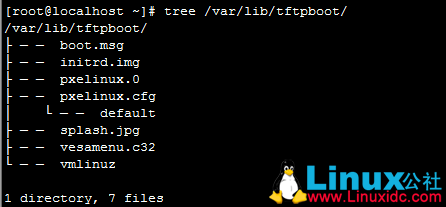
更多详情见请继续阅读下一页的精彩内容 :http://www.linuxidc.com/Linux/2014-07/104881p2.htm
6、制作 kf.cfg 文件 用于自动化安装
下面是我自己制作的 ks.cfg,可根据自己的需求做改动 root 密码是 CentOS6, 这个文件存放的位置需要在系统安装的时候被获取到,我这里存放在我物理机上的 FTP 下
#platform=x86, AMD64, or Intel EM64T
#version=DEVEL
# Firewall configuration
firewall –disabled
# Install OS instead of upgrade
install
# Use network installation
url –url=”ftp://lookback:lookback@192.168.1.20/centos/6/x86_64/base”
repo –name=”CentOS” –baseurl=ftp://lookback:lookback@192.168.1.20/centos/6/x86_64/base
#repo –name=”Fedora EPEL” –baseurl=ftp://lookback:lookback@192.168.1.20/fedora-epel/6/x86_64/ –cost=1000
# Root password
rootpw –iscrypted $6$W6.dzk.2$fqenuNv62I4SF64gAie0OTQK5WdjUOxGbDPkIq/z/xlG42oUh7khkVhfWYDI8U0FmsIofmQtGSq9ruWuoHvy30
#root 密码为 centos6
# System authorization information
auth –useshadow –passalgo=sha512
# Use graphical install
graphical
firstboot –disable
# System keyboard
keyboard us
# System language
lang en_US
# SELinux configuration
selinux –disabled
# Installation logging level
logging –level=info
# Reboot after installation
reboot
# System timezone
timezone Asia/Shanghai
# Network information
network –bootproto=dhcp –device=eth0 –onboot=on
# System bootloader configuration
bootloader –append=”crashkernel=auto crashkernel=auto rhgb rhgb quiet quiet” –location=mbr –driveorder=”sda”
# Clear the Master Boot Record
zerombr
# Partition clearing information
clearpart –all –initlabel
# Disk partitioning information
part /boot –fstype=”ext4″ –size=200
part pv.001 –size=61440
volgroup vg0 –pesize=8192 pv.001
logvol / –fstype=ext4 –vgname=vg0 –size=20480 –name=root
logvol /var –fstype=ext4 –vgname=vg0 –size=20480 –name=var
logvol swap –name=swap –vgname=vg0 –size=2048
logvol /usr –fstype=ext4 –vgname=vg0 –size=10240 –name=usr
%post
echo -e ‘TEST Centos6\nhttp://www.000.org\n’ >> /etc/issue
sed -i ‘1,$s@id:[0-9]:initdefault:@id:3:initdefault:@g’ /etc/inittab
[! -d /root/.ssh] && mkdir /root/.ssh && chmod og=— /root/.ssh
# 下面是我自己为了方便自己使用对自动安装的系统做了免密码登录
cat >> /root/.ssh/authorized_keys << EOF
ssh-rsa AAAAB3NzaC1yc2EAAAADAQABAAABAQDfhGitgDKxQidZXLHS3DFalTvmzTwQ4UH3etQJUE7/iPNwLs6ZDzbR5pqTPfK1YdhUTuJOoNQZ71Fr9qwLtF6aLdgO+ybmK/8sNrMeTvGmKyr4YQ5k02vVIbBnQIEr08eXpV1y206CMWQ7FiiMlFvaeFZhj8trchiffhAUJdZOjl/BikzDJcYdp/sRXrFA4G21yXU0ffOn9aAAvqOqRBRoDhpLnSWaovGjd419Cy/pdhu4Vuispz1x834l975fLv4PIh+3nW9WMbhrmIXzWoTsxnc8OUbT4FnRdA33G8T3JXQc1n1UjX7H4BGfzKA6eax574rspAk51cslaydby2vX== root@lookback.dwhd.org
EOF
# Enable funcd
sed -i ‘s@certmaster =.*@certmaster = 172.16.0.1@g’ /etc/certmaster/minion.conf
/sbin/chkconfig funcd off
# Set the hostname
ClientName=`ifconfig eth0 | awk ‘/inet addr:/{print $2}’ | awk -F. ‘{print $NF}’`
sed -i “s@HOSTNAME=.*@HOSTNAME=client$ClientName.dwhd.org@g” /etc/sysconfig/networks
# set puppet agent
sed -i ‘/\[main\]/a server=server.dwhd.org’ /etc/puppet/puppet.conf
/sbin/chkconfig puppet off
# set hosts
echo ‘172.16.0.1 server.dwhd.org server’ >> /etc/hosts
# yum repo
%end
%packages
@base
@basic-desktop
@chinese-support
@client-mgmt-tools
@core
@desktop-platform
@development
@fonts
@general-desktop
@graphical-admin-tools
@legacy-x
@network-file-system-client
@perl-runtime
@remote-desktop-clients
@server-platform-devel
@x11
%end
现在来修改下 PXE 启动后引导菜单
vi /var/lib/tftpboot/pxelinux.cfg/default
default vesamenu.c32
#prompt 1
timeout 60
display boot.msg
menu background splash.jpg
menu title Welcome to CentOS 6.5! This is test PXE Auto Install
menu color border 0 #ffffffff #00000000
menu color sel 7 #ffffffff #ff000000
menu color title 0 #ffffffff #00000000
menu color tabmsg 0 #ffffffff #00000000
menu color unsel 0 #ffffffff #00000000
menu color hotsel 0 #ff000000 #ffffffff
menu color hotkey 7 #ffffffff #ff000000
menu color scrollbar 0 #ffffffff #00000000
label pxelinux
menu label ^Auto Install or upgrade an existing system
menu default
kernel vmlinuz
append initrd=initrd.img ks=ftp://lookback:lookback@192.168.1.20/centos/6/ks.cfg
label linux
menu label ^Install or upgrade an existing system
kernel vmlinuz
append initrd=initrd.img
label vesa
menu label Install system with ^basic video driver
kernel vmlinuz
append initrd=initrd.img xdriver=vesa nomodeset
label rescue
menu label ^Rescue installed system
kernel vmlinuz
append initrd=initrd.img rescue
label local
menu label Boot from ^local drive
localboot 0xffff
label memtest86
menu label ^Memory test
kernel memtest
append –
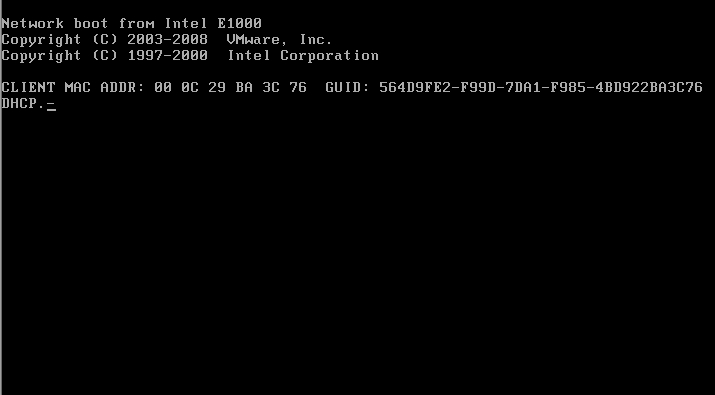
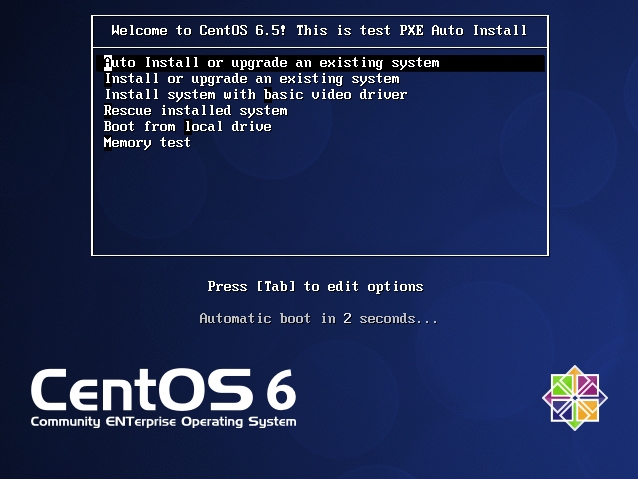
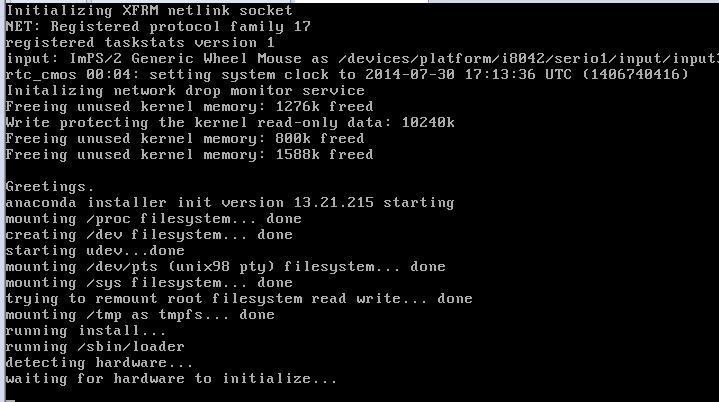
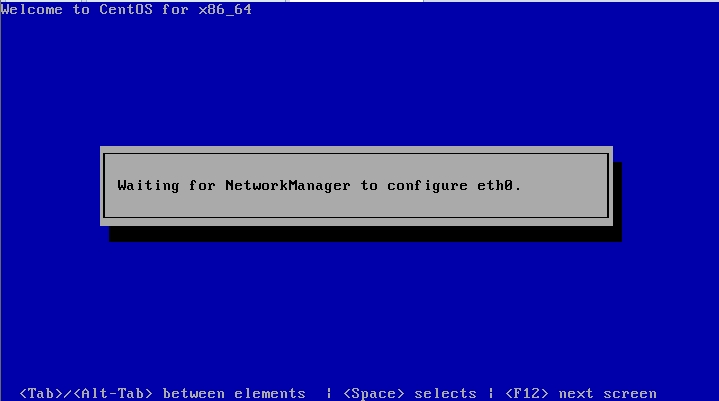
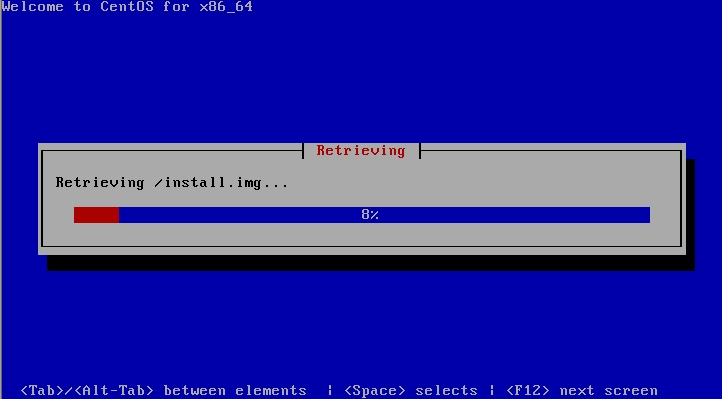
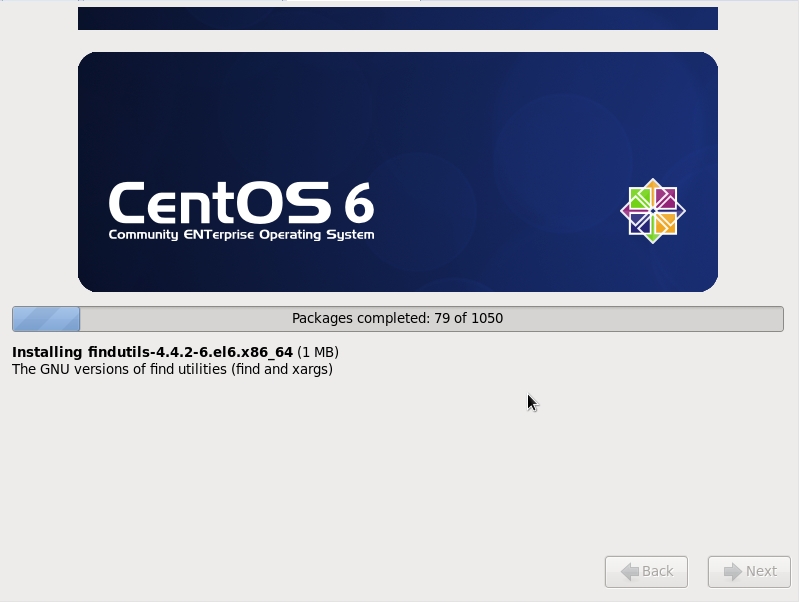
更多 CentOS 相关信息见 CentOS 专题页面 http://www.linuxidc.com/topicnews.aspx?tid=14
1、安装 DHCP TFTP
yum -y install dhcp tftp-server tftp
——————————————————————————–
2、配置 DHCP 文件
cat > /etc/dhcp/dhcpd.conf << EOF
#
option domain-name “dwhd.org”;
# 设置 DHCP 的 DNS
option domain-name-servers 172.16.0.1,114.114.114.114;
# 设置 DHCP 分配出去的 IP 超时时间 单位秒
default-lease-time 86440;
# 设置 DHCPlease-time 时间 单位秒
max-lease-time 100000;
log-facility local7;
# 设置 DHCP 的 IP 和掩码
subnet 192.168.1.0 netmask 255.255.255.0 {
# 设置 DHCP 对外分配 IP 段
range 192.168.1.50 192.168.1.70;
# 设置路由 IP
option routers 192.168.1.1;
# 下面的 4 行是根据 mac 分配指定 IP
host CentOS7 {
hardware ethernet 00:0c:29:ba:3c:76;
fixed-address 192.168.1.65;
}
# 如果是 PXE 网卡来获取到了 IP 告诉网卡下一步联系的服务器 IP 192.168.1.120
next-server 192.168.1.120;
#PXE 网卡联系了服务器之后告诉它应该去获取文件 pxelinux.0
filename “pxelinux.0”;
}
EOF
——————————————————————————–

Linux 系统下构建 DHCP 服务器 http://www.linuxidc.com/Linux/2013-06/86531.htm
CentOS 下配置主从 DNS 服务器以及 DHCP 下的 DDNS http://www.linuxidc.com/Linux/2013-06/85634.htm
SUSE Linux 11 pxe+DHCP+tftp+ftp 无人值守安装 http://www.linuxidc.com/Linux/2013-06/85481.htm
Linux 下架设 DHCP 服务器过程及 3 种测试 http://www.linuxidc.com/Linux/2013-05/84832.htm
Linux 上一步一步实现 DHCP 服务器 http://www.linuxidc.com/Linux/2013-04/82244.htm
CentOS 6.5 系统下构建 DHCP 服务器 http://www.linuxidc.com/Linux/2014-06/103203.htm
Ubuntu 下 tftp 服务搭建 http://www.linuxidc.com/Linux/2012-08/67933.htm
TFTP 服务器配置 http://www.linuxidc.com/Linux/2012-07/64785.htm
Ubuntu Linux 配置 TFTP 下载服务器 http://www.linuxidc.com/Linux/2010-12/30394.htm
Ubuntu 11.10 配置 tftp Server http://www.linuxidc.com/Linux/2012-05/60808.htm
Ubuntu 12.04 搭建 TFTP 服务 http://www.linuxidc.com/Linux/2014-04/100144.htm
Ubuntu 12.04 搭建 tftp 服务器的安装、设置、调试 http://www.linuxidc.com/Linux/2014-04/100114.htm
3、检测 dhcp 配置和启动 dhcp
[root@localhost pxelinux.cfg]# service dhcpd configtest
Syntax: OK
# 检测 dhcp 配置,如果出现 Syntax: OK 则说明配置 OK 了
# 启动 DHCP 服务
service dhcpd start
——————————————————————————–
4、设置 TFTP 开机启动
chkconfig tftp on[/bash]
[bash highlight=”9,10″][root@localhost ~]# netstat -unl
Active Internet connections (only servers)
Proto Recv-Q Send-Q Local Address Foreign Address State
udp 0 0 0.0.0.0:1005 0.0.0.0:*
udp 0 0 0.0.0.0:111 0.0.0.0:*
udp 0 0 0.0.0.0:631 0.0.0.0:*
udp 0 0 0.0.0.0:776 0.0.0.0:*
udp 0 0 0.0.0.0:48819 0.0.0.0:*
udp 0 0 0.0.0.0:67 0.0.0.0:*
udp 0 0 0.0.0.0:69 0.0.0.0:*
udp 0 0 :::1005 :::*
udp 0 0 :::111 :::*
udp 0 0 :::42066 :::*
## 看看 67 69 端口是否被监听了,如果是的就说明好了
——————————————————————————–
开始为 PXE 启动做准备,由于我在当前 Windows 物理机上架设了 FTP 服务,所以我这里就直接用 FTP 服务器做源了
5、下载必要的文件到 TFTP 目录
ftpurl=”ftp://lookback:lookback@192.168.1.20/centos/6/x86_64/base/”
tftpdir=”/var/lib/tftpboot/”
for I in vmlinuz initrd.img; do wget -O ${tftpdir}$I ${ftpurl}images/pxeboot/$I;done
for II in splash.jpg vesamenu.c32 boot.msg isolinux.cfg; do
[“$II” == “isolinux.cfg”] && wget -O ${tftpdir}default ${ftpurl}/isolinux/$II
wget -O ${tftpdir}$II ${ftpurl}/isolinux/$II
done
# 安装 syslinux
yum -y install syslinux
# 复制 pxelinux.0 到 TFTP 目录下
cp $(rpm -ql syslinux | grep ‘\bpxelinux.0’) /var/lib/tftpboot/
# 最后核对下文件
tree /var/lib/tftpboot/ #结果和下图一样就对了

更多详情见请继续阅读下一页的精彩内容 :http://www.linuxidc.com/Linux/2014-07/104881p2.htm
















